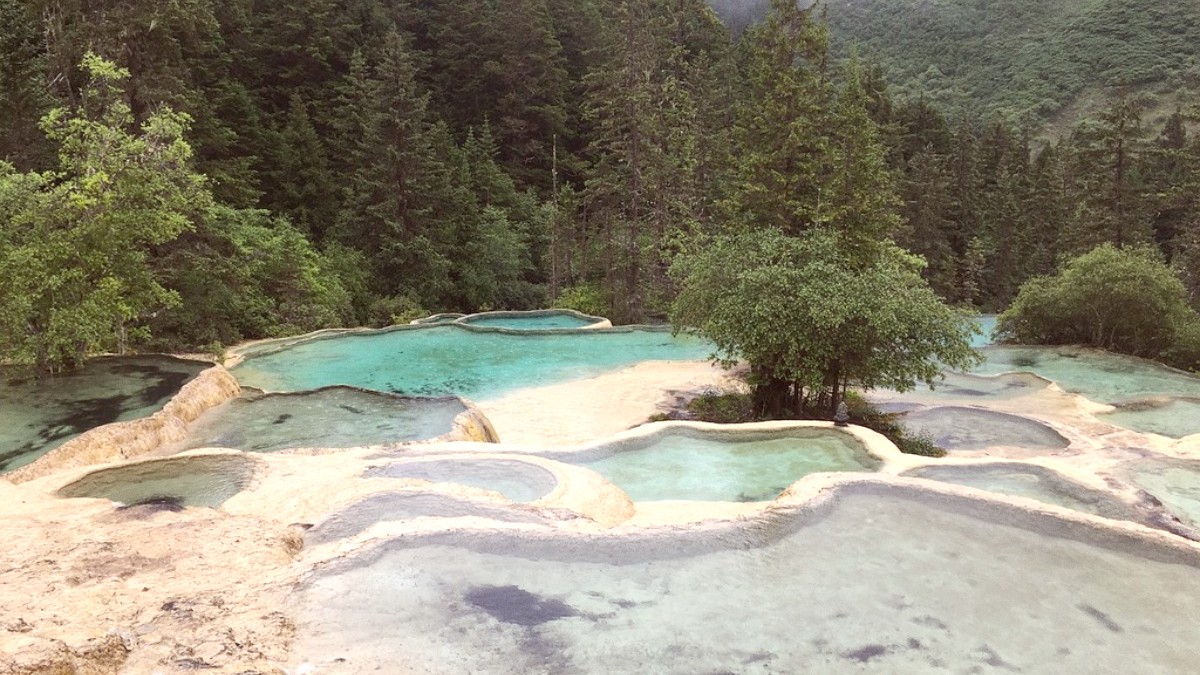
Sichuan, China
Each turn presents a new vista, a fresh burst of color, or a different sound of water moving through the landscape. This destination holds appeal for photographers, nature enthusiasts, and anyone seeking a tranquil escape into awe-inspiring scenery.
Jiuzhaigou promises a visual experience unlike any other, inviting you into a world of pure, untouched beauty.
The journey offers a chance to disconnect from daily routines and reconnect with the quiet power of the earth.
Jiuzhaigou Valley Scenic and Historic Interest Area lies in the Min Mountains on the eastern edge of the Qinghai-Tibetan Plateau. It sits within the Aba Tibetan and Qiang Autonomous Prefecture in Sichuan Province, China. The park’s elevation spans from approximately 2,000 meters (6,562 feet) at the entrance to over 3,100 meters (10,171 feet) at its highest points, like Long Lake. The mountainous terrain is part of a larger range stretching across western Sichuan.
The valley spans a vast area, covering over 72,000 hectares (180,000 acres). Its topography features steep limestone peaks, forested slopes, and deep glacial valleys carved by ancient ice movements. The geology of Jiuzhaigou is central to its beauty. High concentrations of calcium carbonate in the water, combined with specific geological formations, lead to the calcification of lakebeds and the formation of distinctive travertine waterfalls and ponds. Over millennia, water flowing over limestone has deposited minerals, creating the multi-tiered pools and dams that define the landscape.
Jiuzhaigou’s location places it within a seismically active region. A strong earthquake in 2017 caused damage to some areas.
Extensive restoration efforts completed since 2017, with the park reopening fully and nature demonstrating its capacity to heal.
The valley holds three main branches converging at Nuorilang Waterfall: Shuzheng, Rize, and Zechawa Valleys.
Each valley presents unique scenery, all connected by an efficient internal bus system and extensive boardwalks.
Jiuzhaigou’s history spans geological epochs, but its human story centers on the Tibetan people who have lived in these valleys for centuries. The name "Jiuzhaigou" translates to "Valley of Nine Villages," referencing the nine Tibetan communities throughout the area.
These communities have lived in harmony with the valley’s natural rhythms. While traditional lifestyle within the park’s core villages altered due to environmental protection regulations (now prohibiting overnight stays), the cultural presence continues. Visitors observe traditional Tibetan architecture, prayer flags, and local customs in the villages accessible by park bus.
Before its wider recognition, Jiuzhaigou was a hidden gem, known only to local Tibetans. Logging began in the 1970s, but conservation efforts quickly followed its natural beauty recognition. The national park establishment in the early 1980s marked a turning point, halting deforestation. This transition from resource extraction to preservation highlights environmental stewardship.
The valley’s transformation from a local secret to a globally recognized natural wonder mirrors changing attitudes towards environmental protection. It a successful model for preserving natural heritage while welcoming visitors.
Jiuzhaigou presents a journey into a landscape defined by water. Its pristine lakes shimmer with incredible hues, from deep blues and greens to yellows and reds, thanks to unique mineral deposits and varying depths. The Pearl Shoal Waterfall, Nuorilang Waterfall, and Panda Lake Waterfall display the power and grace of water cascading through the valley.
These waterfalls are not merely drops but wide, multi-tiered spectacles, often forming a series of pools and flows that mesmerize the eye.
UNESCO World Heritage Site (1992), World Biosphere Reserve (1997).
Home to nine traditional Tibetan villages. Tibetan culture influences local architecture, cuisine, and customs.
Spring (April-May) for clear skies. Summer (June-August) for lush greenery. Winter (Dec-March) for snowscapes and fewer crowds.
Park buses transport visitors between major sights, allowing flexible exploration. Walking paths and boardwalks connect many scenic spots. The park features clear signage in both Chinese and English.